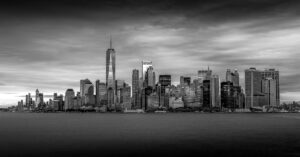In the last few months, I’ve done a lot of things to move my photography forward. In addition to getting better in the core craft, I’ve selected and published my portfolio, started a blog, and written a series of articles. I got initial feedback from a few established photographers and smart people outside my immediate social circle and announced it to all my friends. The whole thing is out and visible to the world, and I’m delighted that I achieved this critical milestone.
I already have ideas for the following challenges, and plans are already in motion to do them in the next six months. I will write about them soon.
But one thing is not going so well. I’ve started an Instagram feed dedicated to my photography. I have many photos and stories that I would like to share, but it is still going painfully slow.
So what’s wrong?
At first glance, the requirements and constraints of Instagram are overwhelming. Use only three aspect ratios, post frequently while making sure everything is unified in color and style, select effective hashtags and link the right groups, write interesting captions, tactically place your comments, follow the “current thing,” post more videos, use trending soundtracks, and most of all, understand and feed the algorithms well.
I don’t expect to become the next influencing sensation, nor do I think that everything needs to work perfectly, but I feel like Instagram is tying my hands. While I’m still experimenting and developing my photography, these “rules” often make me too careful not to make a wrong decision or get stuck in the wrong direction. Of course, this can happen with everything, this blog included, but if I ever decide to do it differently, I can redesign my entire website without problems. Not so with Instagram – once things are there, they seemingly follow you for a long time.
So, instead of just sharing photos that I like and find fitting for the moment, I spend a lot of time researching “dos and don’ts,” gathering hashtags and groups, and planning my feed far in advance. Which also means I don’t post enough. And it has been going on like that for a while.
Recently, I’ve found out about the imposter syndrome. It is a form of self-doubt, typically caused by your personality and behaviors that, if left unchecked, could prevent you from moving forward in any professional or personal endeavor. You know, that little voice that keeps telling you you might not be good enough or worthy of success.
There are several personality types with imposter syndrome, and I recognize my attitude toward Instagram as “the expert.” The expert wants to have everything under control and always wants to learn more before going all in. It seems to me that I’ve been doing precisely that. There is always “just one more thing” to learn or decide before fully committing to an approach.
I should start, learn by doing, and improve over time. Still, psychologically, I haven’t been able to let myself do it.
Admittedly, I’ve seen this type of behavior creep in before. However, I was always more successful in overcoming the need to know it all before starting with other aspects of my photography. With Instagram, it is worse than ever before. Probably because, once you try to do it seriously, most things on Instagram have little to do with photography. Instagram is, first and foremost, a marketing tool, and I have never had any particular interest in marketing.
But it is what it is, and I need to find a way out of that block and finally move forward.
How I plan to deal with it is something that ultimately always worked for me. I set a deadline to do something and then find a way to meet it. The old corporate warrior just can’t justify missing a hard deadline.
Deadlines are powerful tools for me. But I use them sparingly and only for crucial events. I don’t want to devalue their importance by setting them too often or for things that aren’t genuinely important or time-dependent.
At the end of this month, I will travel to New York for my first-ever workshop with a renowned photographer. It would be hard to find a better circumstance to share some exciting photos and my experiences and lessons learned.
So, I set a deadline to get active on the feed before that trip. I still don’t have all the answers about how to do it, and I will likely make mistakes, but now I can hold myself accountable, and there is no turning back. You can also follow my missteps and see how I get better over time, which is precisely the point of this blog and my Instagram feed. That is if Instagram algorithms decide to show you my posts in the first place :).
Do you also sometimes behave in a way that prevents you from moving forward? The imposter syndrome recognizes other personality types in addition to the expert. I’m not a psychologist, so it would not make sense for me to talk in detail about this topic, but if you recognize yourself in some of this, do a few Internet searches. Understanding how your personality and habits are holding you back is often halfway to a solution.
PS (updated Jan 29th 2024)
Did it work?
Well, yes and no. I followed the plan and posted the initial photos as intended. But then, I stopped. Completely.
A failure, then?
Not necessarily. I stopped using Instagram and writing my blog altogether, but this time, it had nothing to do with indecision or other internal problems. It was just that events in the last few months pulled my attention elsewhere.
Building something usually requires doing so many different things that it is impossible to effectively work on everything at once, and that is OK. Like a sailboat, you cannot always move forward in the direct line. You will be fine if you remember the bigger picture and make sure your actions move you in the right direction.
Likewise, despite the theoretical failure to follow up the initial plan, all the lessons described in the main article are still valuable to me. Because of them, I feel ready to try again and make the following months the time when I really start to regularly post.





